
Valdivia: The Gem of Southern Chile's Rivers
Discover Valdivia: A city where lush rivers, colonial history, and vibrant culture meet in the heart of southern Chile.
Valdivia, nestled in the heart of southern Chile, is a city that merges natural beauty with rich history. Located at the confluence of the Calle-Calle, Valdivia, and Cau-Cau rivers, this picturesque destination offers a unique blend of lush landscapes and colonial charm. One of Valdivia's highlights is its vibrant riverfront, perfect for a leisurely stroll or a boat tour. Here, you can witness sea lions basking under the sun and indulge in fresh seafood at the riverside markets. The city's German heritage is evident in its architecture, with charming wooden houses and historic breweries like Kunstmann offering a taste of local culture. Nature enthusiasts will find Valdivia a gateway to stunning natural reserves. The nearby Valdivian Coastal Reserve boasts temperate rainforests teeming with biodiversity, while the Oncol Park provides breathtaking views of the surrounding landscape. The city is also a starting point for exploring the enchanting Chiloé Archipelago, known for its unique wooden churches and myths. Valdivia's history is equally captivating. Visit the ancient Spanish forts, such as the Niebla Fort, which stands as a testament to the city's strategic importance in colonial times. The Valdivia Museum of Contemporary Art and the Historical and Anthropological Museum Maurice van de Maele offer deeper insights into the city's past and vibrant art scene. With its blend of natural wonders and cultural treasures, Valdivia is a must-visit destination for any traveler exploring Chile.
Local tips in Valdivia
- Check the weather forecast before your trip; Valdivia is known for its unpredictable rainy climate.
- Visit the riverside Feria Fluvial for fresh seafood and local produce; it’s best to go early in the morning.
- Take a guided tour to the Spanish forts around the city for a deeper historical perspective.
- If you love craft beer, don’t miss the Kunstmann Brewery for a taste of Valdivia’s German heritage.
- Explore the nearby nature reserves like the Valdivian Coastal Reserve and Oncol Park for stunning scenery and hiking trails.
Valdivia: The Gem of Southern Chile's Rivers
Valdivia, nestled in the heart of southern Chile, is a city that merges natural beauty with rich history. Located at the confluence of the Calle-Calle, Valdivia, and Cau-Cau rivers, this picturesque destination offers a unique blend of lush landscapes and colonial charm. One of Valdivia's highlights is its vibrant riverfront, perfect for a leisurely stroll or a boat tour. Here, you can witness sea lions basking under the sun and indulge in fresh seafood at the riverside markets. The city's German heritage is evident in its architecture, with charming wooden houses and historic breweries like Kunstmann offering a taste of local culture. Nature enthusiasts will find Valdivia a gateway to stunning natural reserves. The nearby Valdivian Coastal Reserve boasts temperate rainforests teeming with biodiversity, while the Oncol Park provides breathtaking views of the surrounding landscape. The city is also a starting point for exploring the enchanting Chiloé Archipelago, known for its unique wooden churches and myths. Valdivia's history is equally captivating. Visit the ancient Spanish forts, such as the Niebla Fort, which stands as a testament to the city's strategic importance in colonial times. The Valdivia Museum of Contemporary Art and the Historical and Anthropological Museum Maurice van de Maele offer deeper insights into the city's past and vibrant art scene. With its blend of natural wonders and cultural treasures, Valdivia is a must-visit destination for any traveler exploring Chile.
When is the best time to go to Valdivia?
Iconic landmarks you can’t miss
Feria Fluvial
Discover the vibrant seafood market of Feria Fluvial in Valdivia, where fresh local catches and artisanal delights await in a lively riverside setting.
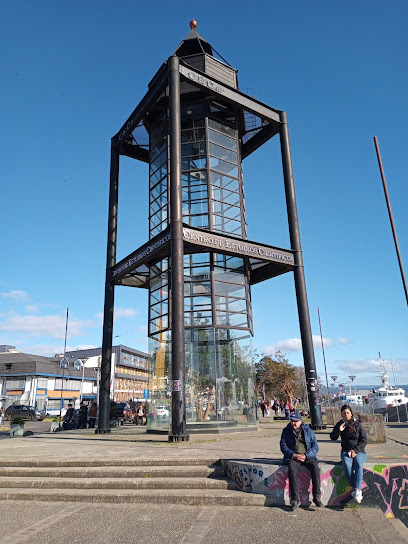
Valdivian Fort System
Discover the Valdivian Fort System, a UNESCO World Heritage site showcasing stunning coastal views and rich colonial history in southern Chile.

Republic Plaza
Explore the lush beauty and vibrant culture of Republic Plaza, Valdivia's favorite city park, perfect for relaxation and recreation.
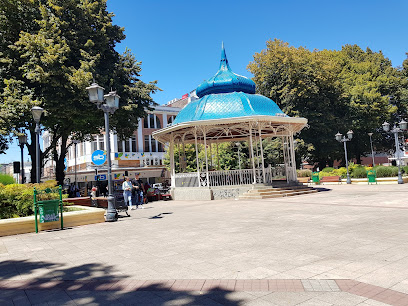
Museo de Sitio Castillo de Niebla
Explore Chile's colonial heritage at the Museo de Sitio Castillo de Niebla, a fascinating museum with stunning views and rich historical exhibits.

museo naval submarino O' Brien
Explore Chile's naval history at the Museo Naval Submarino O' Brien, featuring a real submarine and fascinating exhibits in Valdivia.
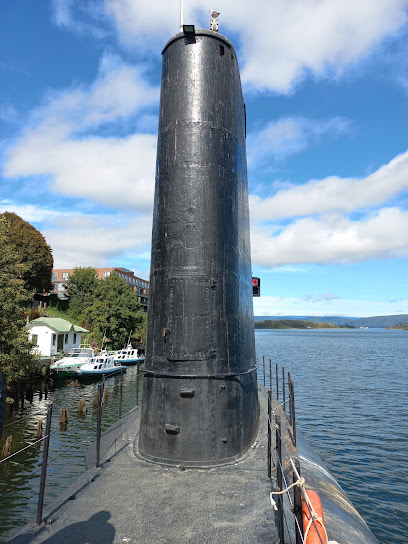
Punta Curiñanco
Discover Punta Curiñanco, a stunning nature preserve in Chile's Los Ríos Region, offering breathtaking landscapes, diverse wildlife, and serene coastal views.
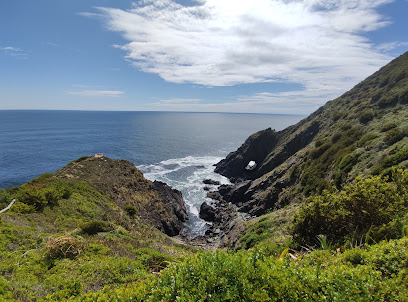
Costanera Valdivia
Explore the beauty of Costanera Valdivia, a picturesque riverside playground perfect for families and relaxation amidst stunning landscapes.
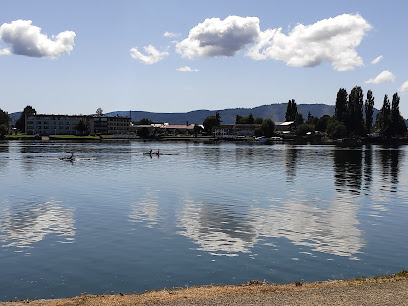
Oncol Park
Discover the serene beauty of Oncol Park, a captivating nature preserve in Los Ríos, Chile, perfect for hiking, wildlife watching, and relaxation.
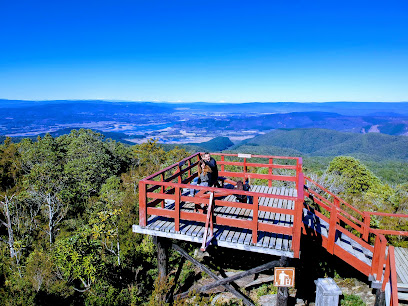
Site Museum Castillo San Pedro de Alcantara
Discover the rich maritime history at Castillo San Pedro de Alcantara, a stunning fortress with breathtaking views of the Pacific in Corral, Chile.
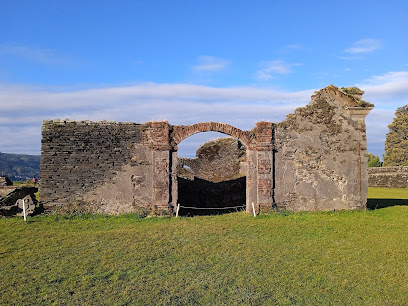
Torreon de los Canelos
Discover the rich history and stunning architecture of Torreon de los Canelos, a must-visit landmark in Valdivia, Chile.
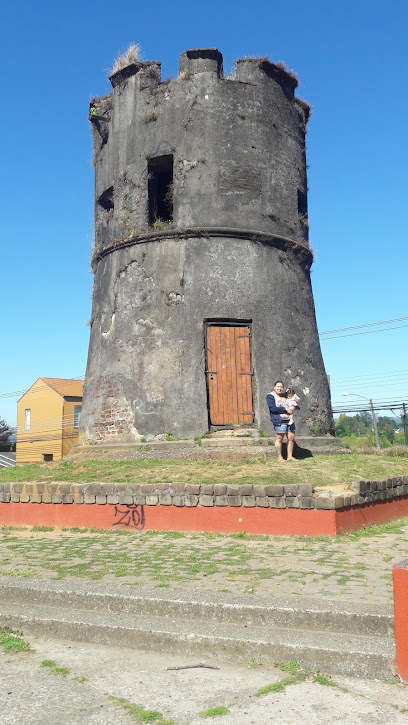
Laguna de Lotos
Discover the enchanting beauty of Laguna de Lotos, a serene park in Valdivia filled with lotus flowers and vibrant wildlife, perfect for nature lovers.
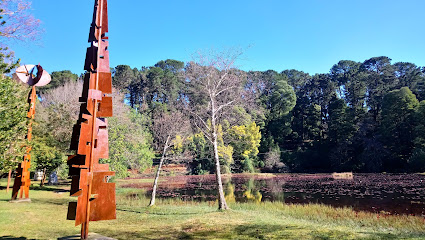
Torreón del Barro
Discover the historical significance and scenic beauty of Torreón del Barro, a must-visit landmark in Valdivia, Chile, showcasing the region's rich colonial past.
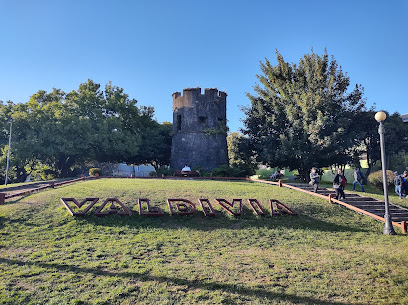
Parque de Entretenciones Cortocircuito
Discover the thrill of adventure and family fun at Parque de Entretenciones Cortocircuito, the top amusement park in Valdivia, Los Ríos.
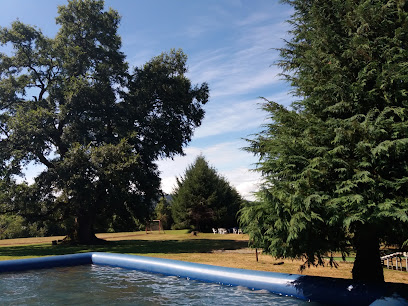
Valdivian Coastal Reserve
Explore the breathtaking Valdivian Coastal Reserve in Chile, where lush forests meet pristine beaches and abundant wildlife awaits at every turn.

Puente Calle-Calle
Discover the enchanting Puente Calle-Calle in Valdivia, where stunning river views meet rich cultural experiences in the heart of Los Ríos.
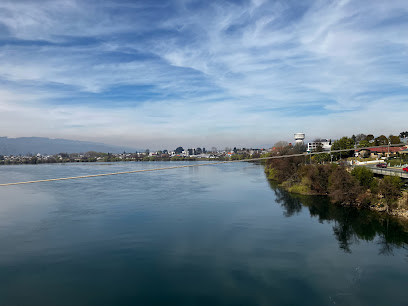
Unmissable attractions to see
Feria Fluvial
Discover the bustling Feria Fluvial in Valdivia, where fresh seafood meets local culture in a vibrant market experience.
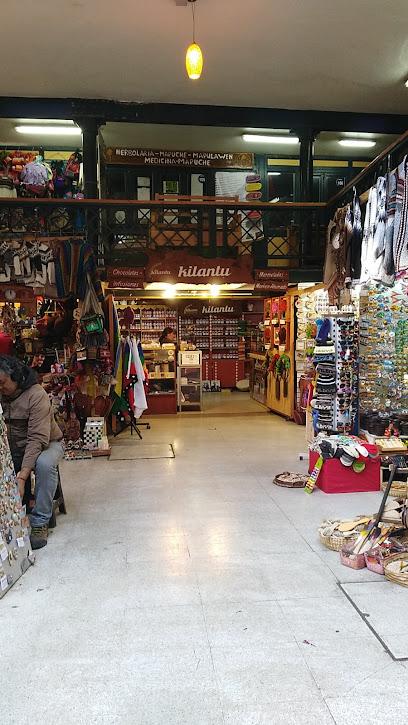
Republic Plaza
Experience the serene beauty and vibrant culture of Republic Plaza, Valdivia's enchanting city park, perfect for relaxation and exploration.
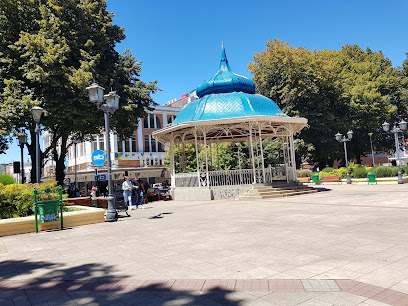
Museo de Sitio Castillo de Niebla
Explore the fascinating history of colonial Chile at Museo de Sitio Castillo de Niebla, a unique museum set in a historic fortress.
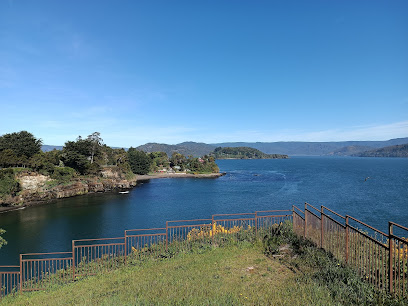
Nueva Costanera
Experience the stunning river views and vibrant culture at Nueva Costanera, the heart of Valdivia's natural beauty and local charm.
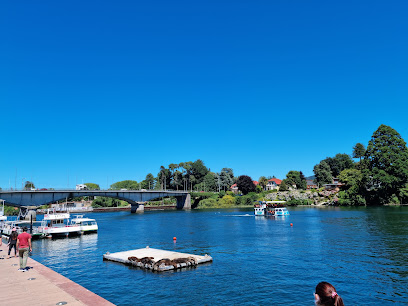
museo naval submarino O' Brien
Explore the depths of Chile's naval history at Museo Naval Submarino O' Brien in Valdivia, a must-visit for maritime enthusiasts and families alike.
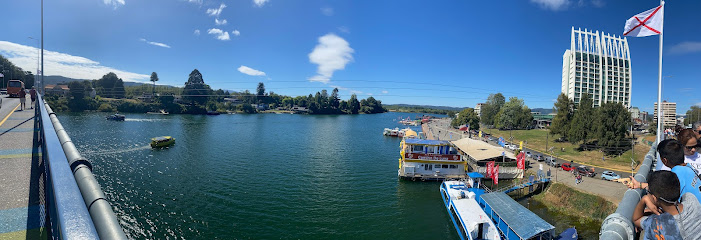
Parque Krahmer
Experience the natural beauty and tranquility of Parque Krahmer, a lush urban park in Valdivia offering serene walking paths and vibrant flora.
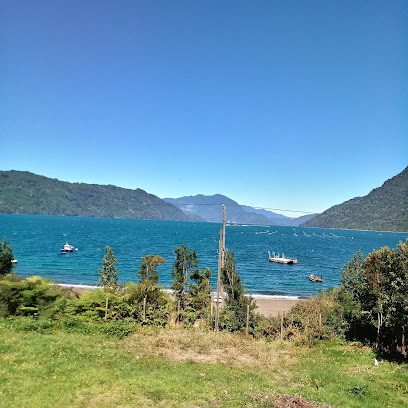
Playa Collico
Experience the tranquility of Playa Collico, a beautiful beach along Río Callecalle in Valdivia, where nature and relaxation meet.
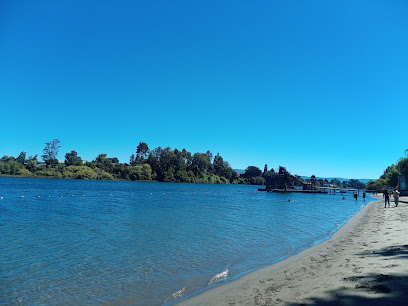
Jardín Botánico UACh
Explore the stunning Jardín Botánico UACh in Valdivia, a botanical garden showcasing diverse flora and tranquil landscapes perfect for relaxation.
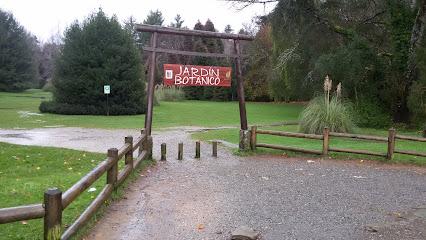
Site Museum Castillo San Pedro de Alcantara
Discover the historical significance and breathtaking views at Castillo San Pedro de Alcantara, a must-visit fortress in picturesque Corral, Los Ríos.
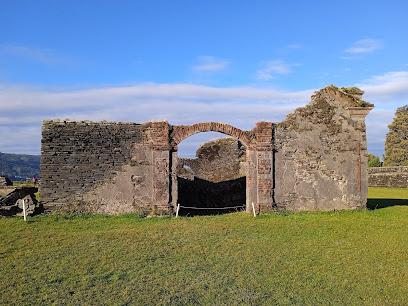
Santa Inés Park
Explore the lush serenity of Santa Inés Park in Valdivia, a perfect retreat for nature lovers and families seeking relaxation and adventure.
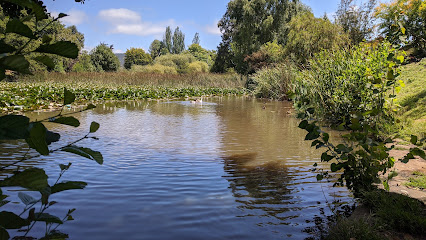
Laguna de Lotos
Discover the tranquil beauty of Laguna de Lotos in Valdivia, a picturesque park featuring stunning lotus flowers and a serene lagoon.
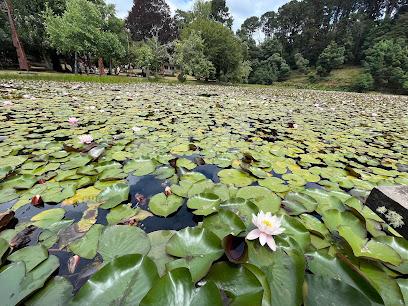
Parque Urbano El Bosque
Explore the lush landscapes and vibrant wildlife of Parque Urbano El Bosque, a tranquil haven in Valdivia for nature lovers and families alike.
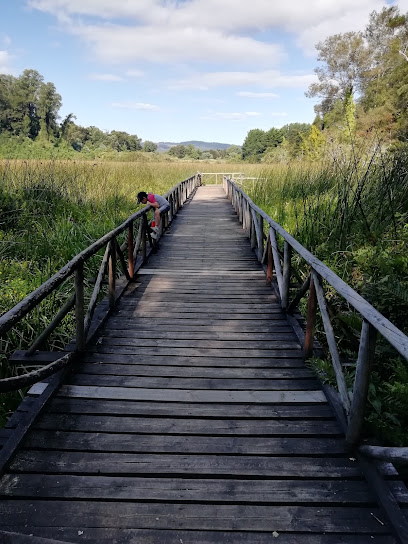
Torreón del Barro
Explore Torreón del Barro in Valdivia, a captivating historical landmark offering stunning views and a glimpse into Chile's rich heritage.
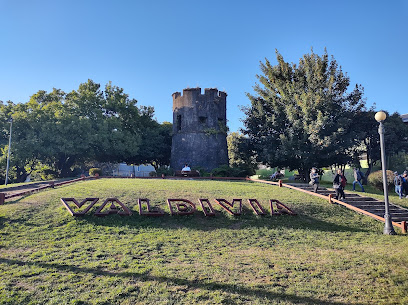
Valdivian Coastal Reserve
Discover the Valdivian Coastal Reserve, a stunning blend of lush forests and pristine beaches in Chile's Los Ríos region, perfect for eco-tourism and adventure.
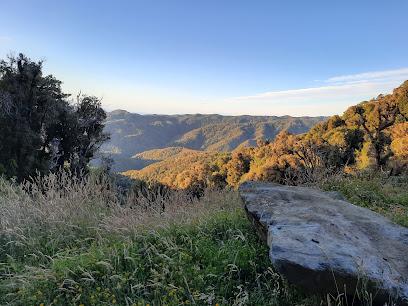
Guillermo Harnecker Park
Experience tranquility and culture at Guillermo Harnecker Park, a scenic urban oasis in Valdivia, perfect for relaxation and family fun.
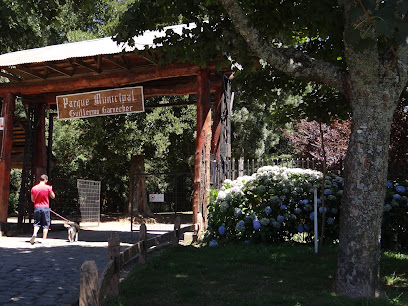
Essential places to dine
Café Haussmann Isla teja
Discover Café Haussmann in Valdivia: A delightful restaurant offering authentic Chilean cuisine in a cozy atmosphere.
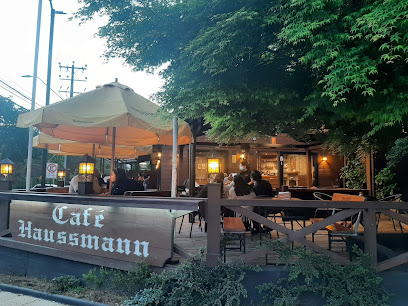
Café Palace
Experience the flavors of Valdivia at Café Palace—where local ingredients meet culinary artistry in a cozy setting.
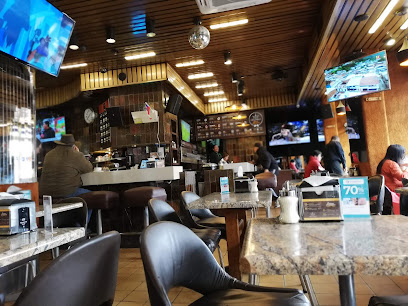
Mercato
Experience the best of Valdivian cuisine at Mercato – where local flavors and culinary creativity come together.
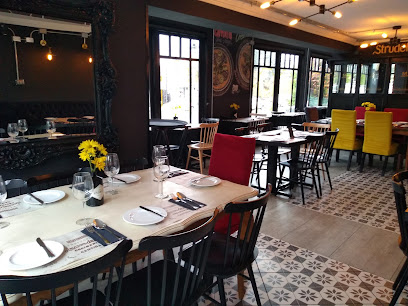
Restaurant Los Leños
Discover authentic Chilean cuisine at Restaurant Los Leños in Valdivia—where local flavors meet warm hospitality.
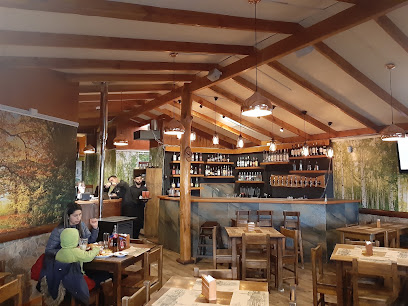
JOTA Restaurant
Experience the flavors of Valdivia at JOTA Restaurant – where local ingredients meet culinary excellence in a cozy setting.
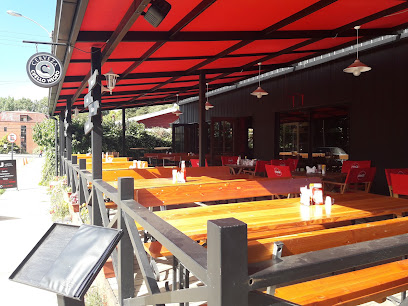
Mesa Incógnita
Discover authentic Chilean cuisine at Mesa Incógnita in Valdivia - where every dish tells a story of flavor and tradition.
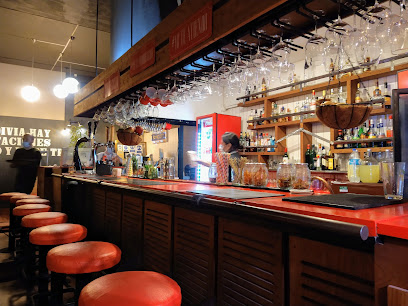
Fogón Sureño
Experience authentic Chilean cuisine at Fogón Sureño in Valdivia – where tradition meets flavor in every dish.
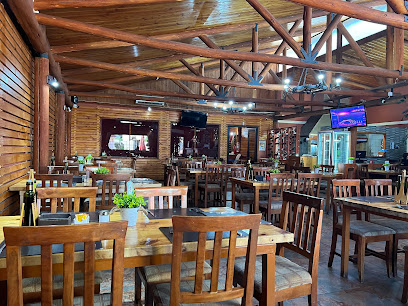
AL YUGO RESTORANT
Experience authentic Chilean flavors at Al Yugo Restaurant in Valdivia – where local ingredients meet vibrant culinary traditions.
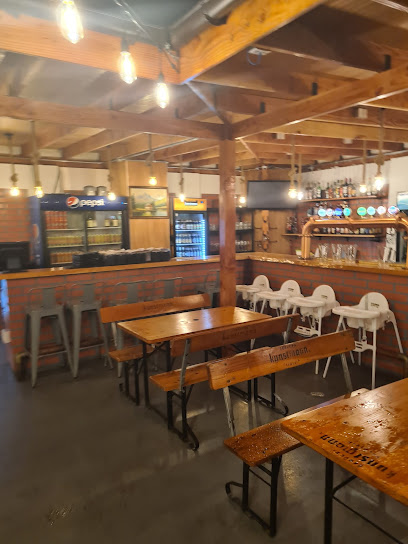
Restaurant La Grulla
Experience local flavors at Restaurant La Grulla in Valdivia - a culinary delight showcasing the best of Chilean cuisine.
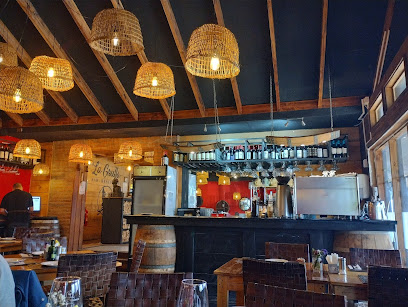
Parrilla de Thor
Savor exquisite grill-based cuisine at Parrilla de Thor in Valdivia—where every meal is an unforgettable culinary journey.
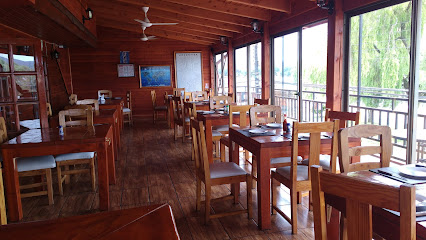
Restaurante Flotante Camino de Luna
Experience exquisite local cuisine at Restaurante Flotante Camino de Luna in Valdivia – where dining meets stunning river views.

Tilo Restobar
Discover the flavors of Valdivia at Tilo Restobar - where local ingredients meet culinary creativity in a cozy gastropub setting.
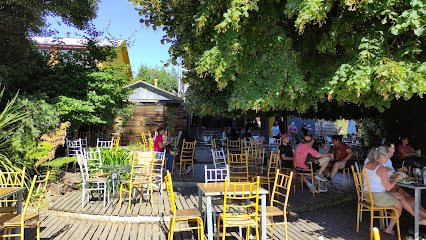
Sello de Raza Restaurant
Experience exquisite local cuisine at Sello de Raza Restaurant in Valdivia - where tradition meets contemporary flair.

Espacio Cocina Restaurant
Experience authentic Chilean flavors at Espacio Cocina Restaurant in Valdivia—where fresh ingredients meet vibrant culinary artistry.
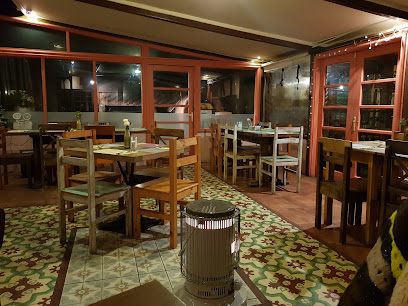
Puerto Canelos
Discover Puerto Canelos: A charming grill restaurant in Valdivia serving exquisite local flavors in a warm atmosphere.
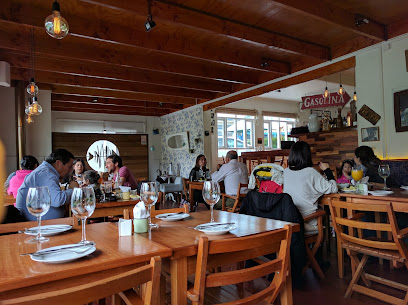
Markets, malls and hidden boutiques
Plaza de Los Rios
Explore Plaza de Los Rios, a bustling shopping mall in Valdivia, offering diverse retail, delightful dining, and vibrant entertainment options.
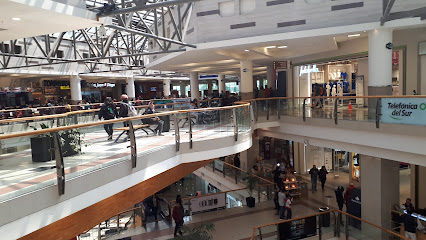
Portal Valdivia
Explore Portal Valdivia, a vibrant shopping mall in Valdivia, offering diverse brands, delicious dining, and lively entertainment for an unforgettable experience.

Falabella Valdivia
Experience the vibrant retail scene at Falabella Valdivia, where shopping meets local culture in the heart of Chile.
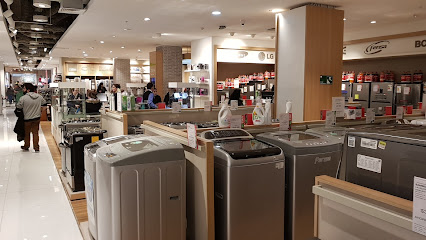
Ripley Mall Plaza Los Ríos
Discover Ripley Mall Plaza Los Ríos in Valdivia - your ultimate shopping destination for fashion, beauty, electronics, and home goods.
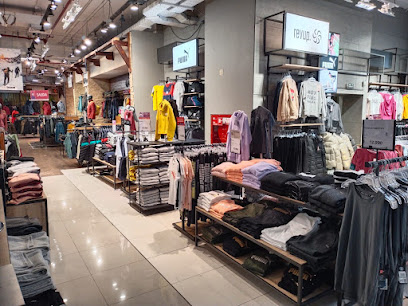
Arte Pitiwe - Tienda Online
Discover unique chocolates, gourmet foods, and authentic handicrafts at Arte Pitiwe, Valdivia's premier gift shop celebrating local artisanship.
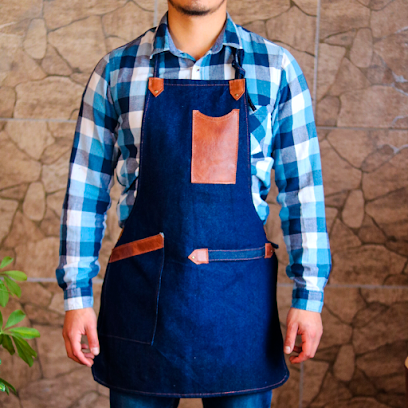
Casa De Guarda
Explore the charm of Valdivia at Casa De Guarda, your destination for unique gifts and local handicrafts that capture the spirit of Chile.
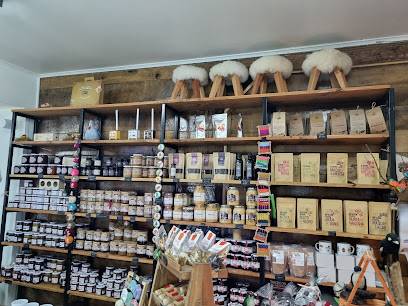
Carito Store
Explore Carito Store in Valdivia for exquisite wool products that showcase local craftsmanship in the heart of Los Ríos region.
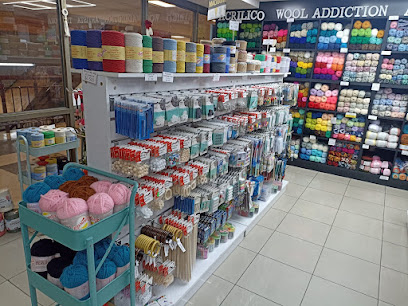
Andesgear Valdivia | Venta de artículos outdoor
Discover top-notch outdoor clothing and equipment at Andesgear Valdivia, your local adventure partner in the stunning Los Ríos region.
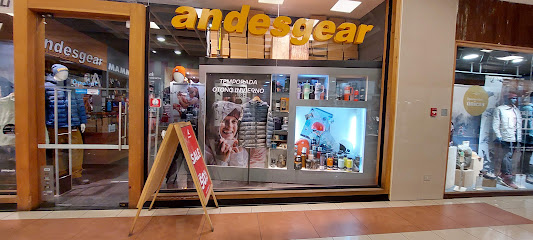
Galeria Santiago , Tienda The Nones Local 5
Explore Galeria Santiago in Valdivia for unique local crafts and artisans, perfect for capturing the essence of Chilean culture.
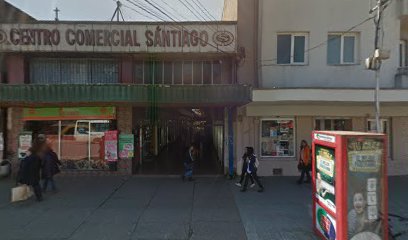
adidas Store Valdivia
Explore the adidas Store Valdivia for top-notch sportswear, footwear, and fitness gear in the heart of Los Ríos region.
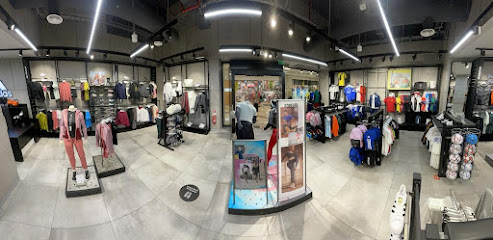
Tienda MUNDO COOL
Explore the vibrant styles at Tienda MUNDO COOL, Valdivia's go-to destination for unique women's fashion and accessories.

Fashion´s Park Valdivia
Discover a diverse range of clothing at Fashion's Park Valdivia, where fashion meets affordability in a vibrant shopping atmosphere.
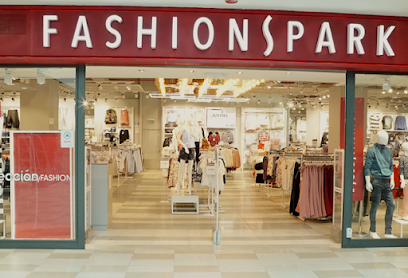
Your Market
Discover local flavors and unique treasures at Your Market, a vibrant store in the heart of Valdivia, Chile, showcasing the region's rich culture.
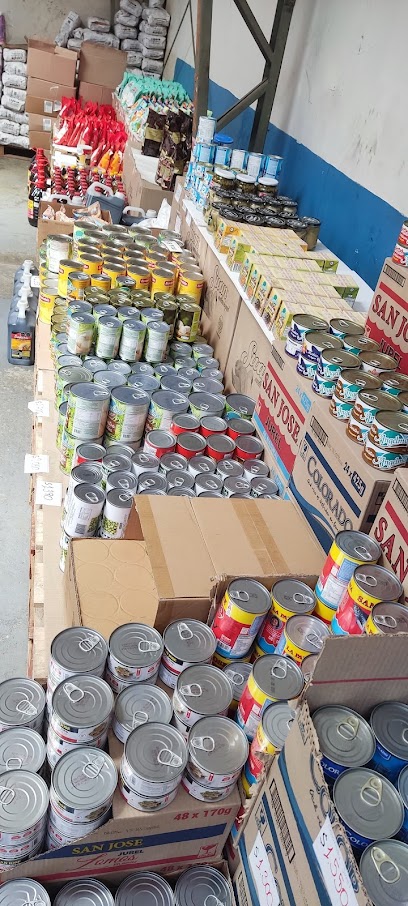
La Tienda de Markito
Discover unique clothing styles at La Tienda de Markito, a charming store in Valdivia celebrating local fashion and vibrant culture.
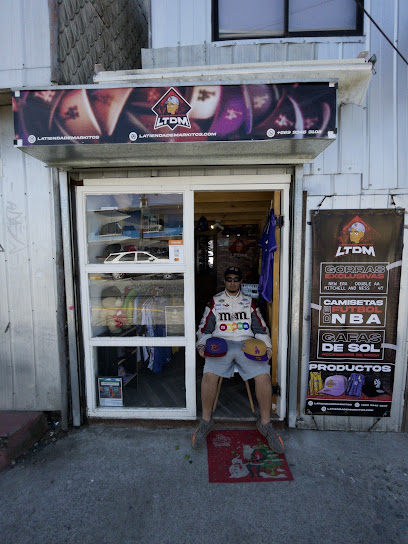
Secret sexshop
Uncover the allure of the Secret Sexshop in Valdivia, where intimate exploration meets a welcoming atmosphere.

Essential bars & hidden hideouts
El Growler
Experience the vibrant craft beer culture at El Growler in Valdivia, a must-visit bar with local and international brews.
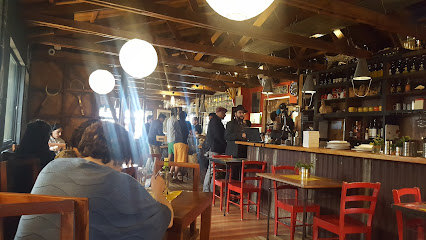
Bar Bundor
Experience the vibrant nightlife at Bar Bundor in Valdivia, where local culture meets delicious drinks and a lively atmosphere.

The Bunker
Discover The Bunker in Valdivia - a vibrant bar and restaurant offering a mix of local flavors, craft cocktails, and an inviting atmosphere for all.

Cervecería Calle Calle
Discover the flavors of craft beer and local cuisine at Cervecería Calle Calle, Valdivia's premier brewpub destination.
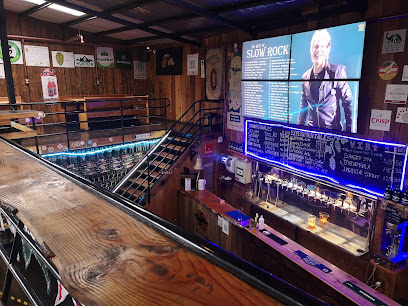
Bimba
Experience the vibrant nightlife of Valdivia at Bimba, a lively bar and disco club offering an electrifying atmosphere and delicious drinks.

Shot Karaoke
Experience the vibrant nightlife of Valdivia at Shot Karaoke, where music, drinks, and fun come together for an unforgettable evening.
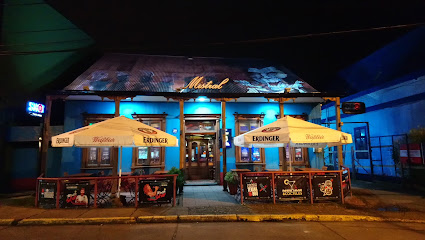
El arbol cervecero
Discover the essence of local craft beer at El Árbol Cervecero, a vibrant bar in Valdivia with a welcoming atmosphere and live music.
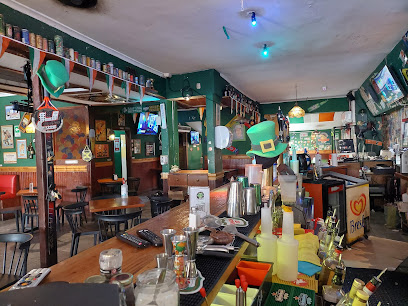
Clover Irish Pub
Discover Clover Irish Pub, a cozy bar in Valdivia offering delicious Irish cuisine and a vibrant atmosphere for a memorable experience.
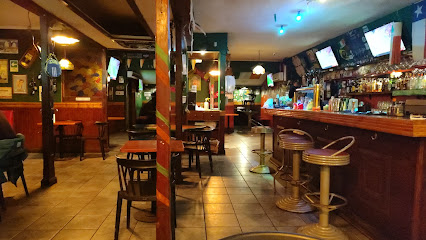
Rio Bar
Discover the culinary delights and lively entertainment at Rio Bar, Valdivia's premier gastropub and piano bar.
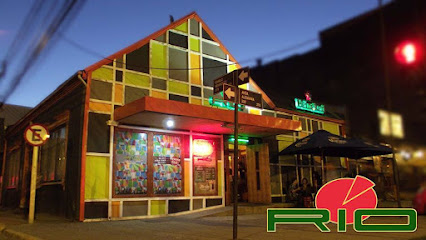
Tilo Restobar
Experience the best of local cuisine at Tilo Restobar, a vibrant gastropub in Valdivia known for its innovative dishes and cozy atmosphere.
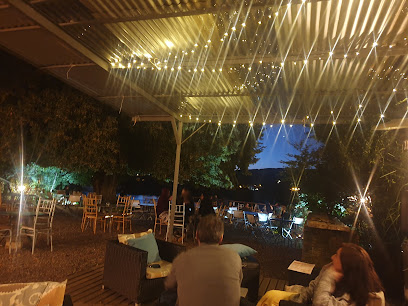
Pub Restobar Strike
Discover the lively charm of Pub Restobar Strike in Valdivia, where delicious gastropub fare meets a vibrant nightlife experience.

Mixturas
Experience the lively atmosphere of Mixturas in Valdivia, where local flavors meet vibrant nightlife in an unforgettable bar setting.
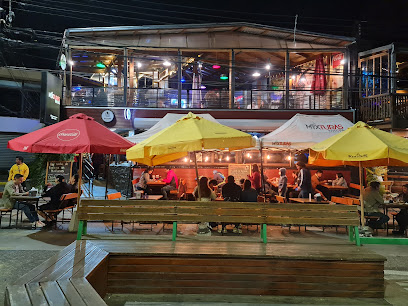
Gaz Gaz
Dive into the lively nightlife of Valdivia at Gaz Gaz, a premier bar and disco that promises unforgettable evenings filled with music, dancing, and vibrant energy.
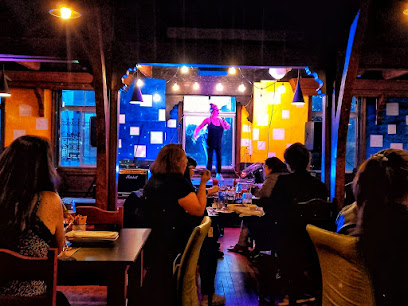
Cave Restobar
Discover the vibrant atmosphere and delicious local cuisine at Cave Restobar, a unique bar in Valdivia perfect for relaxation and fun.

Barbudo Growler
Discover the lively Barbudo Growler in Valdivia, a top beer hall and gastropub offering craft brews and gourmet pizzas in a vibrant atmosphere.
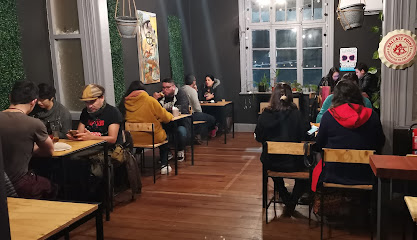
Local Phrases
-
- HelloHola
[oh-lah] - GoodbyeAdiós
[ah-dee-ohs] - YesSí
[see] - NoNo
[noh] - Please/You're welcomePor favor/De nada
[pohr fah-vohr/de nah-dah] - Thank youGracias
[grah-see-ahs] - Excuse me/SorryPerdón/Lo siento
[pehr-dohn/loh see-ehn-toh] - How are you?¿Cómo estás?
[koh-moh ehs-tahs] - Fine. And you?Bien. ¿Y tú?
[byehn. ee too] - Do you speak English?¿Hablas inglés?
[ah-blahs een-glehs] - I don't understandNo entiendo
[noh ehn-tee-ehn-doh]
- HelloHola
-
- I'd like to see the menu, pleaseQuisiera ver el menú, por favor
[kee-syeh-rah behr ehl meh-noo, pohr fah-vohr] - I don't eat meatNo como carne
[noh koh-moh kahr-neh] - Cheers!¡Salud!
[sah-loohd] - I would like to pay, pleaseMe gustaría pagar, por favor
[meh goos-tah-ree-ah pah-gahr, pohr fah-vohr]
- I'd like to see the menu, pleaseQuisiera ver el menú, por favor
-
- Help!¡Ayuda!
[ah-yoo-dah] - Go away!¡Vete!
[veh-teh] - Call the Police!¡Llama a la policía!
[yah-mah ah lah poh-lee-see-ah] - Call a doctor!¡Llama a un médico!
[yah-mah ah oon meh-dee-koh] - I'm lostEstoy perdido
[ehs-toy pehr-dee-doh] - I'm illEstoy enfermo
[ehs-toy ehn-fehr-moh]
- Help!¡Ayuda!
-
- I'd like to buy...Quisiera comprar...
[kee-syeh-rah kohm-prahr...] - I'm just lookingSolo estoy mirando
[soh-loh ehs-toy mee-rahn-doh] - How much is it?¿Cuánto cuesta?
[kwan-toh kwehs-tah] - That's too expensiveEstá muy caro
[ehs-tah mwee kahr-oh] - Can you lower the price?¿Puedes bajar el precio?
[pweh-dehs bah-hahr ehl pree-see-oh]
- I'd like to buy...Quisiera comprar...
-
- What time is it?¿Qué hora es?
[keh oh-rah ehs] - It's one o'clockEs la una
[ehs lah oo-nah] - Half past (10)Y media (10)
[ee meh-dee-ah (diez)] - MorningMañana
[mah-nyah-nah] - AfternoonTarde
[tahr-deh] - EveningNoche
[noh-cheh] - YesterdayAyer
[ah-yehr] - TodayHoy
[oy] - TomorrowMañana
[mah-nyah-nah] - 1Uno
[oo-noh] - 2Dos
[dohs] - 3Tres
[trehs] - 4Cuatro
[kwah-troh] - 5Cinco
[seen-koh] - 6Seis
[seys] - 7Siete
[syeh-teh] - 8Ocho
[oh-choh] - 9Nueve
[nweh-veh] - 10Diez
[dyehs]
- What time is it?¿Qué hora es?
-
- Where's a/the...?¿Dónde está...?
[dohn-deh ehs-tah] - What's the address?¿Cuál es la dirección?
[kwal ehs lah dee-rehk-syohn] - Can you show me (on the map)?¿Puedes mostrarme (en el mapa)?
[pweh-dehs mohs-trahr-meh (ehn ehl mah-pah)] - When's the next (bus)?¿Cuándo es el próximo (autobús)?
[kwan-doh ehs ehl prohk-see-moh (ow-toh-boos)] - A ticket (to ....)Un boleto (a ....)
[oon boh-leh-toh (ah ....)]
- Where's a/the...?¿Dónde está...?
History of Valdivia
-
Valdivia was founded on February 9, 1552, by Pedro de Valdivia, a Spanish conquistador. The city was named after him and quickly became one of the most important Spanish settlements in southern Chile. Its strategic location near the confluence of the Calle-Calle and Cruces rivers made it a key site for trade and defense.
-
The initial establishment of Valdivia was met with strong resistance from the indigenous Mapuche people. The Arauco War, which lasted for several centuries, saw numerous raids and attacks on the city. Despite these challenges, the Spanish fortifications and the resilience of the settlers helped maintain Valdivia as a prominent outpost in the region.
-
In 1643, a Dutch fleet led by Hendrik Brouwer attempted to capture Valdivia. The Dutch saw the city as a potential base for controlling the Pacific coast and disrupting Spanish trade routes. Although they managed to occupy the city briefly, they were eventually driven out by the Spanish forces, who reinforced their defenses even further after this event.
-
On May 22, 1960, Valdivia was struck by the most powerful earthquake ever recorded, with a magnitude of 9.5. The earthquake caused widespread destruction and triggered massive tsunamis that affected coastal areas around the Pacific Ocean. The city faced significant rebuilding efforts in the following years, which reshaped its infrastructure and landscape.
-
Valdivia has evolved into a vibrant cultural hub, known for its rich history and diverse heritage. The city hosts numerous festivals, including the International Film Festival of Valdivia, which attracts filmmakers and enthusiasts from around the world. The presence of the Austral University of Chile also contributes to the city's dynamic cultural and academic scene.
-
In the mid-19th century, Valdivia experienced a wave of German immigration, which left a lasting impact on the city's culture and architecture. The German settlers introduced new farming techniques, brewing traditions, and architectural styles. Many buildings in Valdivia still reflect this German influence, making it a unique blend of indigenous, Spanish, and German cultures.
Valdivia Essentials
-
Valdivia is located in the Los Ríos Region of southern Chile. The nearest major airport is Pichoy Airport (ZAL), situated about 32 kilometers northeast of the city. Several domestic flights connect Pichoy Airport to Santiago, Chile's capital. From the airport, you can take a taxi or a shuttle bus to reach the city center. Alternatively, you can reach Valdivia by bus from major Chilean cities such as Santiago, Concepción, and Puerto Montt. The bus terminal is centrally located, making it convenient for travelers.
-
Public transportation in Valdivia includes buses and taxis. Buses are affordable and cover most areas of the city, including popular tourist spots. Taxis are also readily available and can be hailed on the streets or booked via phone. Renting a car is another option if you plan to explore the surrounding areas at your own pace. For a unique experience, take a boat ride along the Calle-Calle River to enjoy scenic views of the city and its surroundings.
-
The official currency in Chile is the Chilean Peso (CLP). Credit and debit cards are widely accepted in hotels, restaurants, and shops in Valdivia. However, it's advisable to carry some cash for smaller establishments and markets. ATMs are plentiful in the city, but be aware that international transaction fees may apply. Currency exchange services are available in banks and specialized exchange offices.
-
Valdivia is generally a safe city for tourists. However, as with any travel destination, standard precautions should be taken. Avoid walking alone at night in poorly lit areas, and keep an eye on your belongings in crowded places. While Valdivia doesn't have specific high-crime areas targeting tourists, staying vigilant and aware of your surroundings is always recommended.
-
In case of emergency, dial 133 for police assistance, 131 for medical emergencies, and 132 for the fire department. Valdivia has several hospitals and clinics, including the Regional Hospital of Valdivia. It's advisable to have travel insurance that covers medical emergencies. Pharmacies are available throughout the city for minor health issues and over-the-counter medications.
-
Fashion: Do dress in layers, as the weather can be unpredictable. Avoid overly casual or revealing clothing when visiting religious sites. Religion: Do respect local customs and traditions, especially when visiting churches. Public Transport: Do offer your seat to elderly passengers and avoid eating or drinking on buses. Greetings: Do greet people with a handshake and a friendly 'Hola.' Eating & Drinking: Do try local dishes such as 'curanto' and 'crudos.' Don't refuse food offerings, as it can be considered impolite.
-
To experience Valdivia like a local, visit the Feria Fluvial, a bustling riverside market where you can buy fresh seafood and local produce. Engage with local artisans at the Mercado Municipal, where you can find handmade crafts and souvenirs. Don't miss a visit to the Kunstmann Brewery for a taste of Valdivia's famous craft beer. For outdoor enthusiasts, a walk through the Valdivian Coastal Reserve offers stunning natural landscapes and wildlife.
Trending Landmark in Valdivia
-
Feria Fluvial
-
Valdivian Fort System
-
Republic Plaza
-
Museo de Sitio Castillo de Niebla
-
museo naval submarino O' Brien
-
Punta Curiñanco
-
Costanera Valdivia
-
Oncol Park
-
Site Museum Castillo San Pedro de Alcantara
-
Torreon de los Canelos
-
Laguna de Lotos
-
Torreón del Barro
-
Parque de Entretenciones Cortocircuito
-
Valdivian Coastal Reserve
-
Puente Calle-Calle
Nearby Cities to Valdivia
-
Things To Do in Osorno
-
Things To Do in Pucon
-
Things To Do in Temuco
-
Things To Do in Puerto Varas
-
Things To Do in Bariloche
-
Things To Do in San Carlos de Bariloche
-
Things To Do in Concepción
-
Things To Do in Curicó
-
Things To Do in Rancagua
-
Things To Do in San Rafael
-
Things To Do in Santiago
-
Things To Do in Valparaíso
-
Things To Do in Viña del Mar
-
Things To Do in Mendoza
-
Things To Do in San Juan













